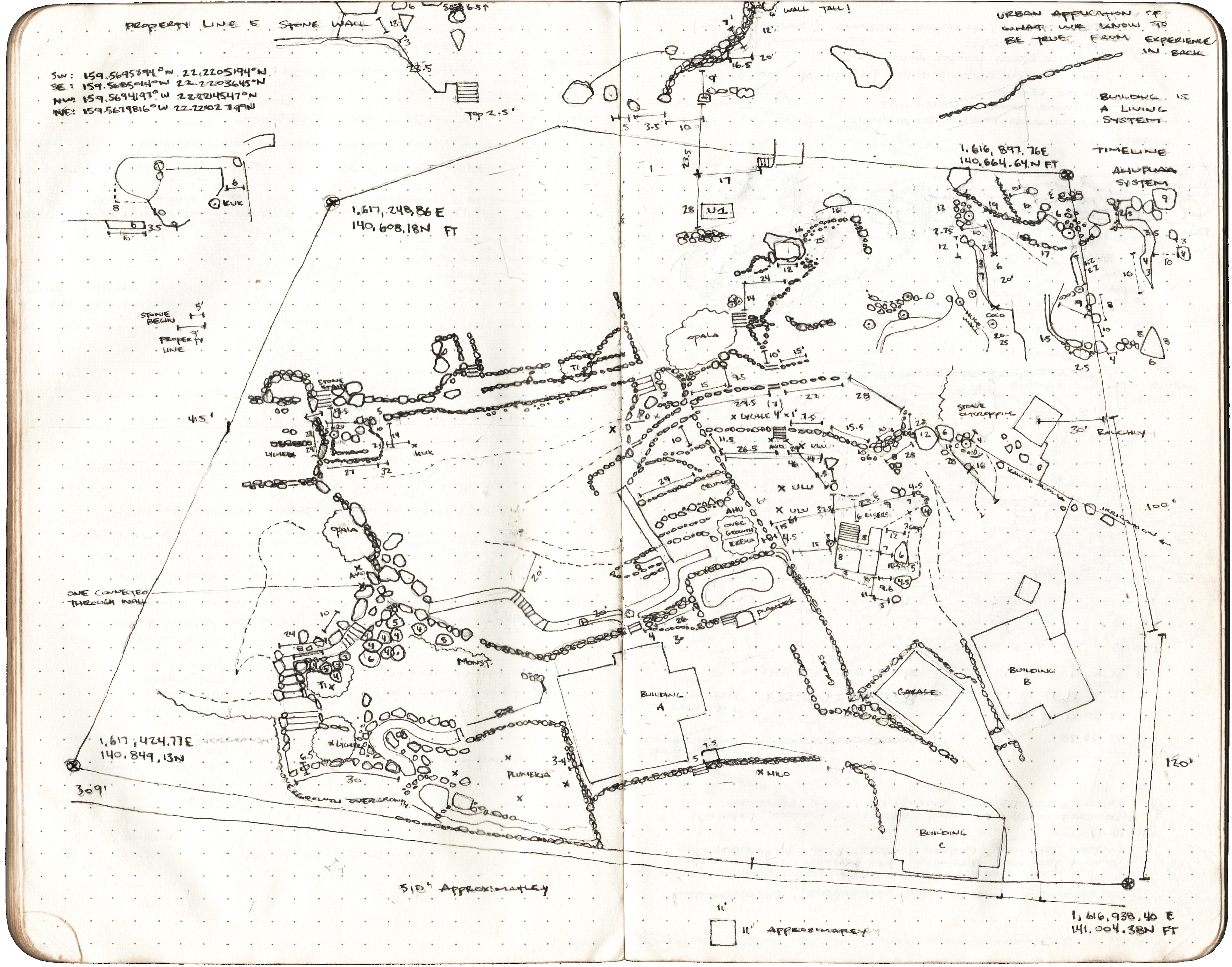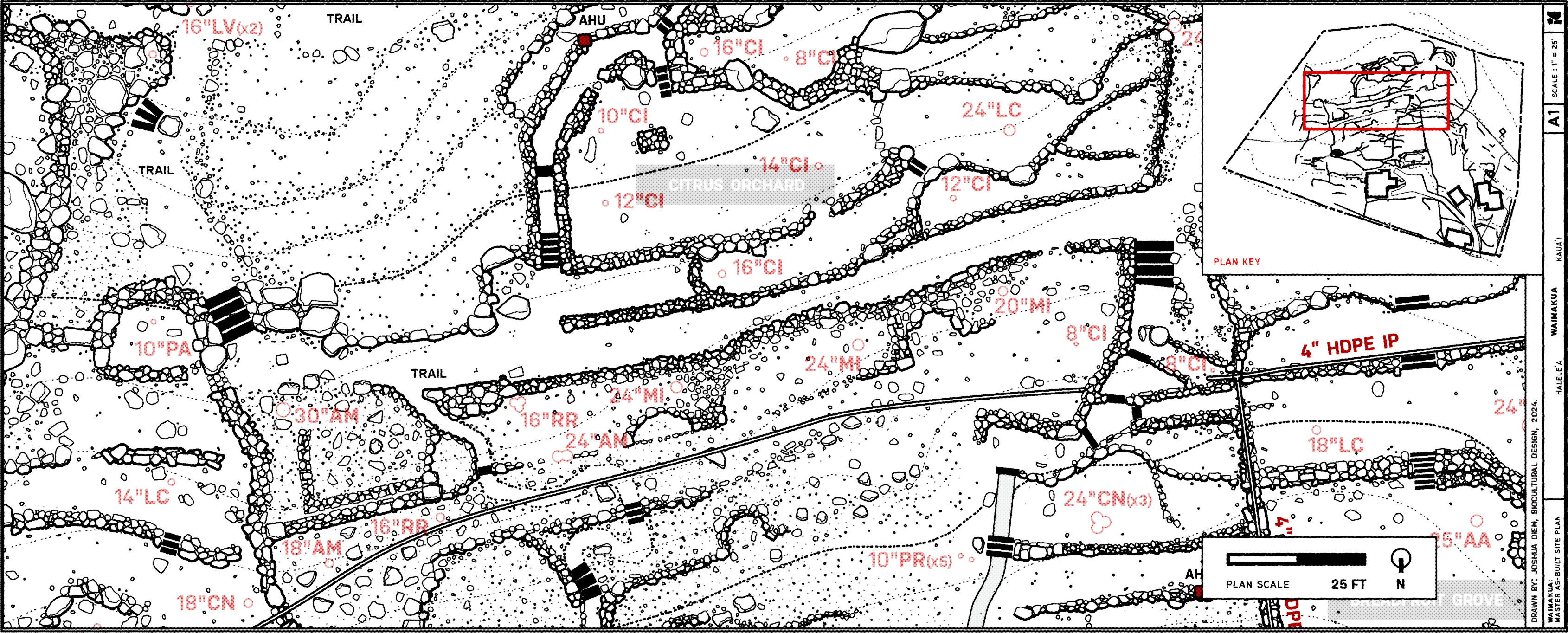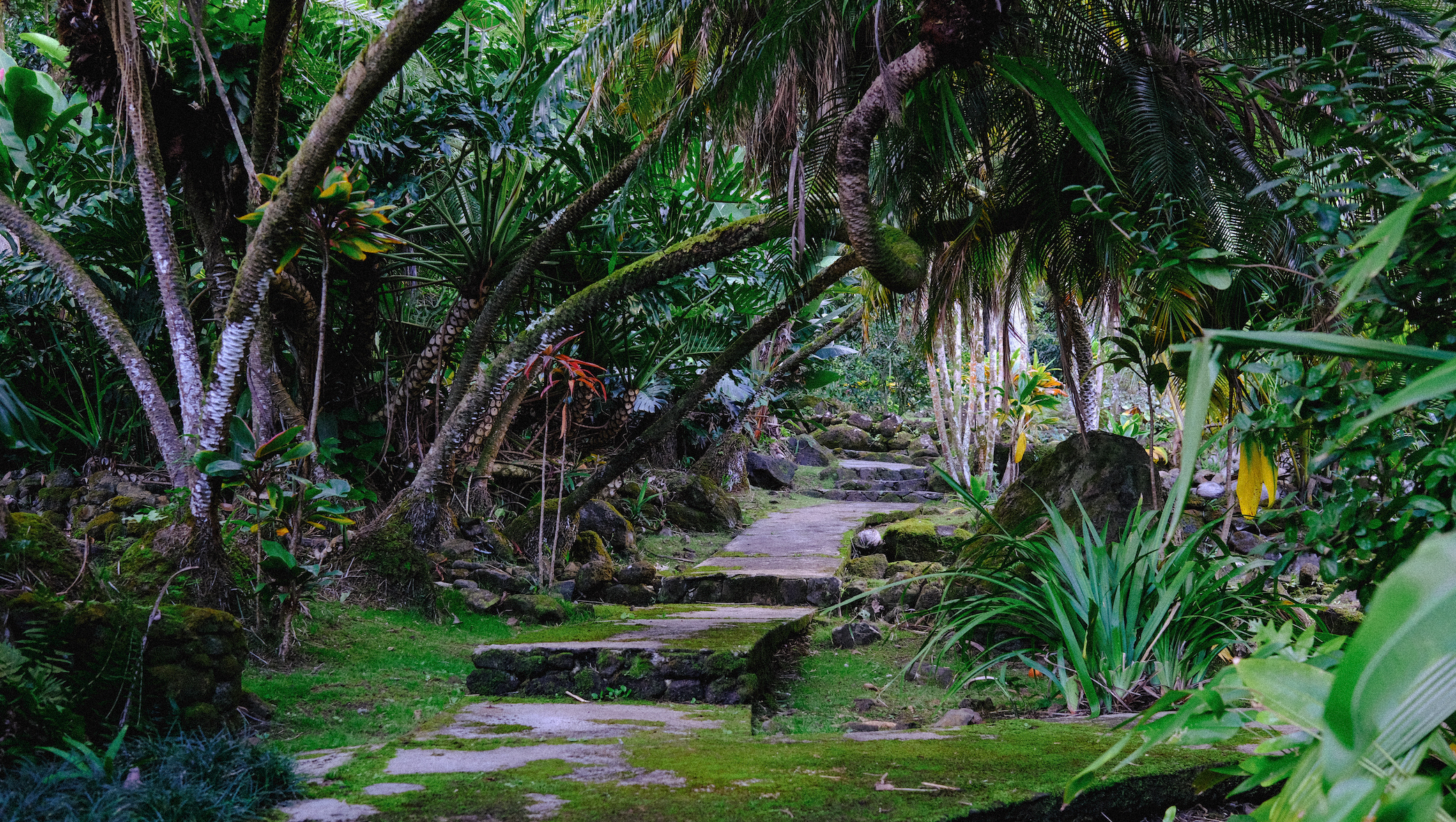WAIMAKUA: Translating a Garden’s Walls
Work: Survey and mapping for nomination to the Hawai‘i Register of Historic Places and the National Register of Historic Places.
Location: Waimakua, Ha’ena, Kaua’i
Size: 3.35 ac
Status: May, 2024.
Description:
Detailed survey and cartographic documentation of historic grounds, including gardens, houses, and a pool, for nomination to the Hawai‘i Register of Historic Places and the National Register of Historic Places. The property, situated within ancient Hawaiian terraces, features 5,900 feet of dry stone walls. The process employed advanced mapping techniques and hand draftsmanship to ensure data accuracy, legibility, and feeling. The project achieved significant property tax reduction benefits for the landowner.
Work: Survey and mapping for nomination to the Hawai‘i Register of Historic Places and the National Register of Historic Places.
Location: Waimakua, Ha’ena, Kaua’i
Size: 3.35 ac
Status: May, 2024.
Description:
Detailed survey and cartographic documentation of historic grounds, including gardens, houses, and a pool, for nomination to the Hawai‘i Register of Historic Places and the National Register of Historic Places. The property, situated within ancient Hawaiian terraces, features 5,900 feet of dry stone walls. The process employed advanced mapping techniques and hand draftsmanship to ensure data accuracy, legibility, and feeling. The project achieved significant property tax reduction benefits for the landowner.



In the opening scene of the second act of Rodgers and Hammerstein’s 1958 Hollywood musical classic, South Pacific, Liat, a native islander played by France Nuyen, enters the frame dancing her way down steep stone-paved jungle trails to reach her fictional tiki village by the sea.
In our world, these are the slopes of Waimakua. Nestled at the northwest end of Kauai’s historic Belt Road, this particularly dramatic landscape has come to be known for its stone, figures of mythology and material alike.
The Piliwale Sisters, a stone formation that appears like two figures running with their skirts caught in the wind behind them, stand frozen atop Manoa Ridge. Pohaku-o-Kane and Pohaku-Loa, brothers who walked here along the ocean floor from Tahiti, now frame this place at its seashore and mountain peak.
In our world, these are the slopes of Waimakua. Nestled at the northwest end of Kauai’s historic Belt Road, this particularly dramatic landscape has come to be known for its stone, figures of mythology and material alike.
The Piliwale Sisters, a stone formation that appears like two figures running with their skirts caught in the wind behind them, stand frozen atop Manoa Ridge. Pohaku-o-Kane and Pohaku-Loa, brothers who walked here along the ocean floor from Tahiti, now frame this place at its seashore and mountain peak.
Juliet Rice Wichman, a conservationist, botanist, and author, called Waimakua home. She recognized the significance of the stone for both its scale and artistry. She had an imagination for the ruins of the architectural complex left behind. In total, the walls and terraces extend to cover 5900’, or over one mile in length. From this ancient Hawaiian framework, Wichman envisioned a garden, pathways that meander through terraces and entrances into courtyards shaded under breadfruit, mango, lychee, and citrus. This vision was a precursor to the later founding of Limahuli Garden & Preserve.
The proceeds from the movie shoot went to building the pool, a 1958 addition to the property. Its water flows directly from the nearby spring of Kawai Aloha.
The project utilized design practice and spatial thinking to peel back the canopy, extrude the topography, and reveal the ancient gardens of Waimakua.
The proceeds from the movie shoot went to building the pool, a 1958 addition to the property. Its water flows directly from the nearby spring of Kawai Aloha.
The project utilized design practice and spatial thinking to peel back the canopy, extrude the topography, and reveal the ancient gardens of Waimakua.





The process to recover and decipher these ruins from the overgrowth, the site was surveyed and
validated using GPS and Lidar instrumentation and arial imagery. The collected data was then integrated into design software to build models of the site. Utilizing those base models, the site was surveyed numerous times thereafter to distinguish and make record the characteristics of the stonework. Hand draftsmanship lent legibility and feeling to data.






